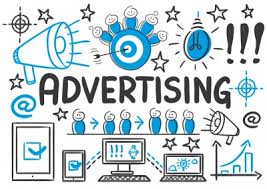
Make it Pop!
There are 5 major components to good advertising copy: (The order of these is essential to success)
- Command Attention
- Showcase Benefits of Products/Services
- Prove the Benefits
- Persuade People to Embrace the Benefits
- Call to Action
Advertising is sales in print. So, you need to think about the unique benefits your products/services offer and showcase that in a persuasive way. You need to emphasize results, not features.
Let’s take a minute to talk about each of these components:
- Command Attention: This is usually accomplished with the headline. You need an attention-getter that makes people want to know more about your products/services. The best headlines give a vivid portrayal of the benefits or show how a problem can be avoided with your products/services. The headline is the advertisement for the advertisement.
- Showcase Benefits: You have to showcase the benefits of your products and services and, more importantly, show how they will solve or prevent a problem. They need to know what’s in it for them. Include useful, factual and clear information to show precisely what the benefits are and how they are going to help the customer.
- Offer Proof: This is where you prove what the advertisement is offering. You need to establish you have a method to deliver. Consider information that establishes credibility and past performance.
- Persuade: You need to add compelling reasons for your potential customers to purchase your products/services. Use a hard sell approach and create scarcity. This will enact your potential customers to feel like they have to act now. Which leads into the last component.
- Call to Action: You need to compel your potential customers to DO something. They need to check out your site, sign up for your newsletter, purchase your products, contact you about services…something. Offer a freebie-a booklet, sample, product, bonus, demo, consult, limited time price…the list goes on. There are lots of ways to get potential customers excited about ordering and help them feel like they are getting an amazing deal.
Good advertisements include all of these components and are not complete without any of them. You can sit down and think through any one of these components, then figure out how to best place them together for the most effectiveness. We can help you with this too.
If you’re having a hard time deciding on what you want, the tools, resources and coaches in the GUIDED TOUR can help you define the wants and needs of your company in relation to customer service.
I can help you work through all these areas and give your business a jumpstart that puts you ahead of your competition right from the start.
Feel free to visit https://newcoachingstrategies.com for your GUIDED TOUR and a complimentary copy of my first book in the five-book series:
Business Breakthrough Secrets, Volume I, The Secret Formula To Discovering $10K Hidden Inside Your Business In 45 Minutes Or Less… Guaranteed!
If you have further questions about this article, please leave me a message and I’ll respond as soon as possible!



